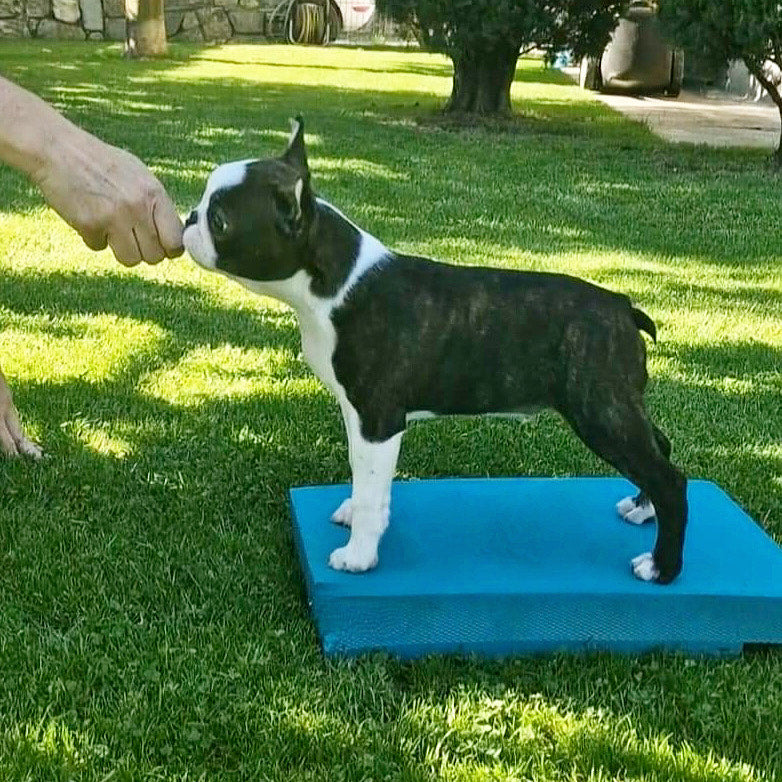
From puppy to champion
Share
Building the Foundation for a Successful Show Dog
Standing in the show ring with a dog that confidently trots beside you, poses perfectly, and accepts the judge’s examination with a wagging tail — that’s a feeling many of us dream of. But the road to that moment begins much earlier than most people think. From puppyhood, we can (and should!) start laying the foundation for future success.
In this post, we’ll share practical tips on how to raise a confident, happy, and show-ready dog — from puppy to polished show star.
Quality Socialization — Not Just Quantity
A great show dog needs to handle new environments, loud sounds, unfamiliar dogs, people who stare (yes, judges really do!), and physical examination. All of this starts with early socialization — but it needs to be done right.
Quality over quantity:
Five positive, safe experiences are better than 50 overwhelming ones. Let the puppy explore the world at their own pace.
Varied environmental training:
Visit parking lots, cafés, training clubs, bus stops — different surfaces, smells, and atmospheres help shape a well-rounded young dog.
Teach the puppy to seek support from you:
Reward eye contact or moments when your pup turns to you in a new situation — this builds trust and a strong relationship.
Get Your Puppy Used to Handling — Like a Judge Would
One of the most challenging parts of a show for many dogs is being examined: a stranger touching their body, looking in their mouth, inspecting every detail. Start training for this early — and keep it playful.
Practice standing on a table:
From as early as 4 weeks old, get the puppy used to being handled on a table. Talk to them, give treats, and help them associate the table with positive, calm experiences.
Look in the mouth daily:
Start gently and reward generously. Make it a routine — ideally before meals! The dog will learn to associate the inspection with something positive that comes afterward.
Get used to being “prodded and poked”:
Let your puppy get used to you feeling along their back, chest, legs, and tail.
Invite other people to help:
Once the puppy is comfortable, let others do similar handling exercises. Begin with people the puppy already trusts.
Build Joyful Movement from the Start
In the ring, it's not just about how the dog looks — movement is just as important. Learning to trot at the right pace, with energy and good posture, takes training.
Teach the “show trot”:
Reward your puppy when they move nicely beside you — use your voice, treats, or toys depending on what motivates them best.
Short and happy sessions:
Practice just a few meters at a time in the beginning. Stop before your puppy loses focus.
Make movement fun:
Run together, change direction, offer treats — keep it playful and positive.
Focus, Connection, and Teamwork — Your Best Investment
It’s easy to get caught up in looks, but in the ring, it’s often the bond between handler and dog that makes the biggest impression. A dog that checks in with you, moves naturally by your side, and trusts you will show itself far better.
Reward spontaneous eye contact:
When your puppy looks at you — reward! Build the habit that connection pays off.
Follow-me games:
Turn walking into a fun game — let the puppy follow you through turns, stops, and starts. No commands — just joy and rewards.
Train with distractions:
Change locations and environments to make sure your focus training holds up even in busy settings.
Summary: It All Starts Long Before the First Show
A champion isn’t built in a day — but every day you add a small piece of calmness, connection, movement, and joy makes a difference. Start early, keep the training playful, and always prioritize your dog’s experience. A dog that wants to show off will do so with genuine joy — and it shows in every step.
